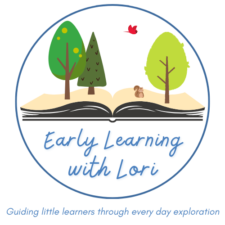Preschool Zoo Habitat Activity: Create Animal Habitats

Are you looking for a play-based way to teach animal habitats to young children? This preschool zoo habitat activity was one of the highlights of our zoo-themed summer camp. Designed for preschoolers ages 2-6, this activity combines open-ended play with early science concepts. Best of all, it’s incredibly easy to set up!
What is a Zoo Animal Habitat?
Before we set up the center activity, let’s think about how to introduce young children to the concept of animal habitats. A habitat is a place where an animal lives. Every animal needs food, water, shelter, and space to survive. Whether it’s a jungle, the ocean, or a snowy polar zone, each habitat is designed to meet those basic needs.
In this preschool zoo activity, children explore how animals live in their environments by building their own zoo habitats using blocks and props.

How to Introduce this Zoo Habitat Activity
Start with a quick group discussion or a short circle time. You might say:
“Today we’re going to build places for animals to live! These places are called habitats. A habitat gives animals what they need—food, water, shelter, and space to move around.”
Hold up a few sample items: a piece of green felt, a block, and a toy animal. Model a simple habitat by placing the animal on the felt and building a wall or adding a pretend tree.
Ask the children:
- What might this animal eat?
- Where could it hide or sleep?
- What kind of ground does it need?
If the discussion leads to animals like lions or other meat-eaters, you might add:
“Some animals, like lions or seals, eat meat or fish. Zookeepers make sure every animal gets the food it needs—meat for lions, fish for seals, and grass or leaves for animals like zebras and giraffes.”
“The zoo habitats have fences or walls—not just to keep the animals in, but to keep them safe in their special homes.”
This simple explanation keeps the tone positive while teaching important concepts about animal care and safety.
Once you have demonstrated, how to set up an animal habitat, your preschoolers will be ready to design their own zoo enclosures and habitats.

Materials for Preschool Zoo Animal Habitat Activity
- Building blocks (foam, wood, or plastic) At first, we use one container of blocks. As children gain confidence in the project, we got out more blocks.
- Felt pieces in green, blue, brown, and white (to represent land, water, snow, etc.)
- Squares of artificial greenery or artificial plant mats, or pieces of artificial turf
- Plastic animal figures (I used a set of Little People ABC animals, but use whatever zoo animals you have available)
- Optional: small rocks, tree slices, or sticks for terrain (I used these with older children)
Tip: The Little People animals worked especially well for my 2-year-olds—chunky and safe for little hands!

How to Set Up the Zoo Habitat Activity
Set up the materials on a large table, rug or in your blocks center. Invite the children to create animal habitats using the blocks and materials provided. The felt becomes the “ground,” the greenery adds a natural element, and the blocks serve as walls, shelters, or climbing structures. Add plastic animals and let the creativity flow!
Children designed everything from jungles to oceans to made-up zoos with very organized enclosures. Some grouped animals by habitat, but most of the preschoolers had their animals sharing unique habitats. I’ve never seen a seal and a goat in the same enclosure, but it worked in our imaginary zoo.

What Kids Learned with the Habitat Activity
- Science: Children explored the concept of habitats by building environments that reflect animals’ needs—shelter, space, water, and food.
- Engineering & Design: They practiced spatial planning and structural design using blocks and props.
- Fine Motor Skills: Placing small animals and arranging props supported dexterity.
- Social Skills: Many children collaborated on shared “zoos,” practicing turn-taking and explaining their designs to others.
Differentiation Ideas
Some children are overwhelmed by textures or visual clutter. Here’s how I made this center more accessible:
- Offer pre-made felt “habitat mats” with a few natural props to get them started.
- Use visual guides with photos of simple setups to inspire hesitant builders.
- Limit the number of animals or habitat supplies available at once for children who prefer focused choices.
These small changes may big difference for your more sensitive learners.
Want a Printable Habitat Craft?
This engaging paper folding craft helps students explore animal habitats through hands-on, imaginative play. Children cut out a habitat background and animals, fold each piece in half, and then balance the animals to create a mini 3D habitat scene.
Final Tip

I would have loved to leave our zoo set up over several days to see how the habitats changed and grew with each class. But as a specials teacher, I must reset the room every 30 minutes!
If you have the time and space, consider leaving the habitats out for a while. You might be surprised by how the zoo evolves as children add new animals, rearrange spaces, or tell new stories through their play.





